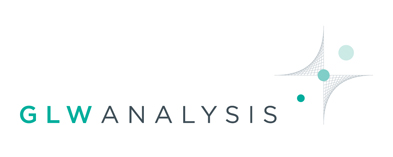Key features of MAF Software:
operations data; financial data; forecasts including taxation.
Management Analysis and Forecasting (MAF)
FEATURES OF THE MAF SOFTWARE SYSTEM
| FEATURES | DETAILS |
| PURPOSES | MAF System purpose is to summarise and forecast critical organisation performance data each month. MAF reports supplement organisation in-house accounting software and operating systems output. MAF does not operate as a repository of actual business transaction data. |
| SYSTEM | MAF is an Excel template system with all system formulae converted to binary code. MAF may be used in any organisation and in any country, through Excel 2013 or later version on Microsoft Windows Operating System on a designated personal computer. |
| TERM | MAF includes actual data for the previous year and the current year. It forecasts for the current year and next year. A User may choose twelve calendar months per year, or thirteen four-week periods per year, in which to summarise and report organisation performance. |
| COMPARATIVE DATA | A User may choose data of the previous year, prepare a budget or target, or take independent source data, to be the Comparative Data. MAF facilitates preparation of a budget or target by calculating interest, taxes, and some assets and liabilities, automatically. |
| MONTHLY REPORTING STRATEGY | A User may choose one of Profit Growth (financial performance), Commercial Compliance (financial performance, organisation compliance), Strategic Growth (financial and operating performance), Value-Added Growth (financial performance, stakeholder performance). |
| OPERATIONS DATA | A User needs to identify Key Performance Indicators and group them into Stakeholders or Perspectives. MAF has nine Stakeholder names set up in advance, which a User may amend. Each month, a User must input actual organisation performance data for each Key Performance Indicator. |
| FINANCIAL DATA | Initially, a User needs to map organisation trial balance accounts from in-house accounting software into accounts that comply with MAF standard format and reflect organisation responsibilities. Each month, a User must input actual trial balance data, to be re-mapped automatically. |
| FORECASTS | MAF extrapolates operations performance data each month for the current year and next year. It forecasts financial revenues and expenses and interest, taxes, some assets & liabilities, automatically. A User may input operations forecasts and some financial forecasts manually. |
| ASSUMPTIONS | A User may vary selected Assumptions used in a budget, target, and forecasts. Sensitivity analyses may include a demand growth rate, debtor & creditor terms, selling price index, supplier price index, employment growth, wage growth, interest rates, revenue taxes, income tax. |
| TAXATION | MAF calculates indicative estimates of revenue tax (VAT, GST, or Sales Tax) and Income Tax only, from User input and standard formulae, to forecast indicative impacts on profitability and cashflow. Actual tax liabilities must be calculated by professional tax advisers based on actual data. |
| REPORTS | MAF reports on financial data include profitability, assets and liabilities, cash-flows. MAF reports on operations data include Key Performance Indicators for each selected Stakeholder or Perspective, and a unique Value-Added Growth report. Excel charting facilities are standard. |
| CONTROLS | MAF checks User Input data for arithmetic and consistency. An over-all MAF system summary hi-lights matters for attention. MAF reports include notes of assumptions, numbers of manual forecasts included, and qualifications including tax qualifications appropriate for the reports. |
MAF processes two data streams of operations and financial performance to provide monthly and quarterly reports. Target customers were originally independent small to medium size enterprises (SMEs). But whether an entity is a city building or a nuclear power plant, an entity may use the MAF approach to plan its operations and finances, analyse actual results, forecast and re-forecast, and report promptly, every month.
If you seek a flexible reporting system to facilitate your firm to evolve its own reports over time, then you should trial the MAF System.
If you seek feedback every month on how your organisation is achieving its long-term strategic targets, then you should trial the MAF System.
If you would like to vary assumptions on demand growth or prices or wages or interest rates or tax rates, for forecasting this year and next year, then you should trial the MAF System.
If you would like a unique monthly report showing value-added growth of stakeholders in your firm, then you should trial the MAF System.
You may order a trial version of MAF at https://glwanalysis.com/order.php
In complying with management needs, MAF worksheets follow Management Accounting Standards and Insights issued by the Chartered Institute of Management Accountants, The International Federation of Accountants, and The Institute of Management Accountants, as far as possible.
In the case of an SME, the software can be used as follows:
Prior to beginning the year:
- Update strategy
- Decide on objectives and key data indicators
- Decide on report format
- Set up spread sheet
- Set up data controls
- Input opening balances
- Input budget /targets
- Input assumptions
Each period for reporting:
- Input actual technical data
- Input actual financial data
MAF Spreadsheet
Data controls regularly check the data
Automatic report generation
Periodic Management Reports
- Operations data
- Financial data
Key results and forecasts
